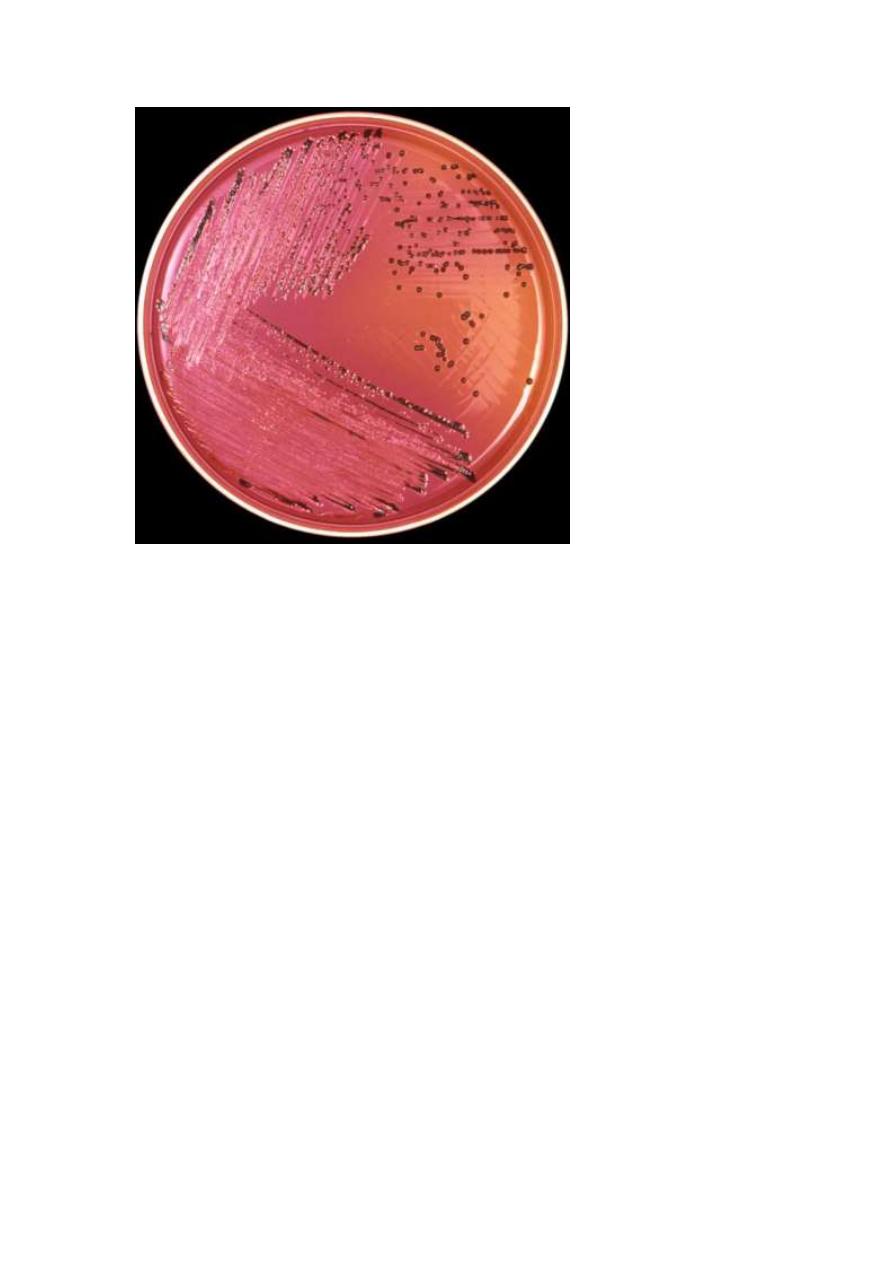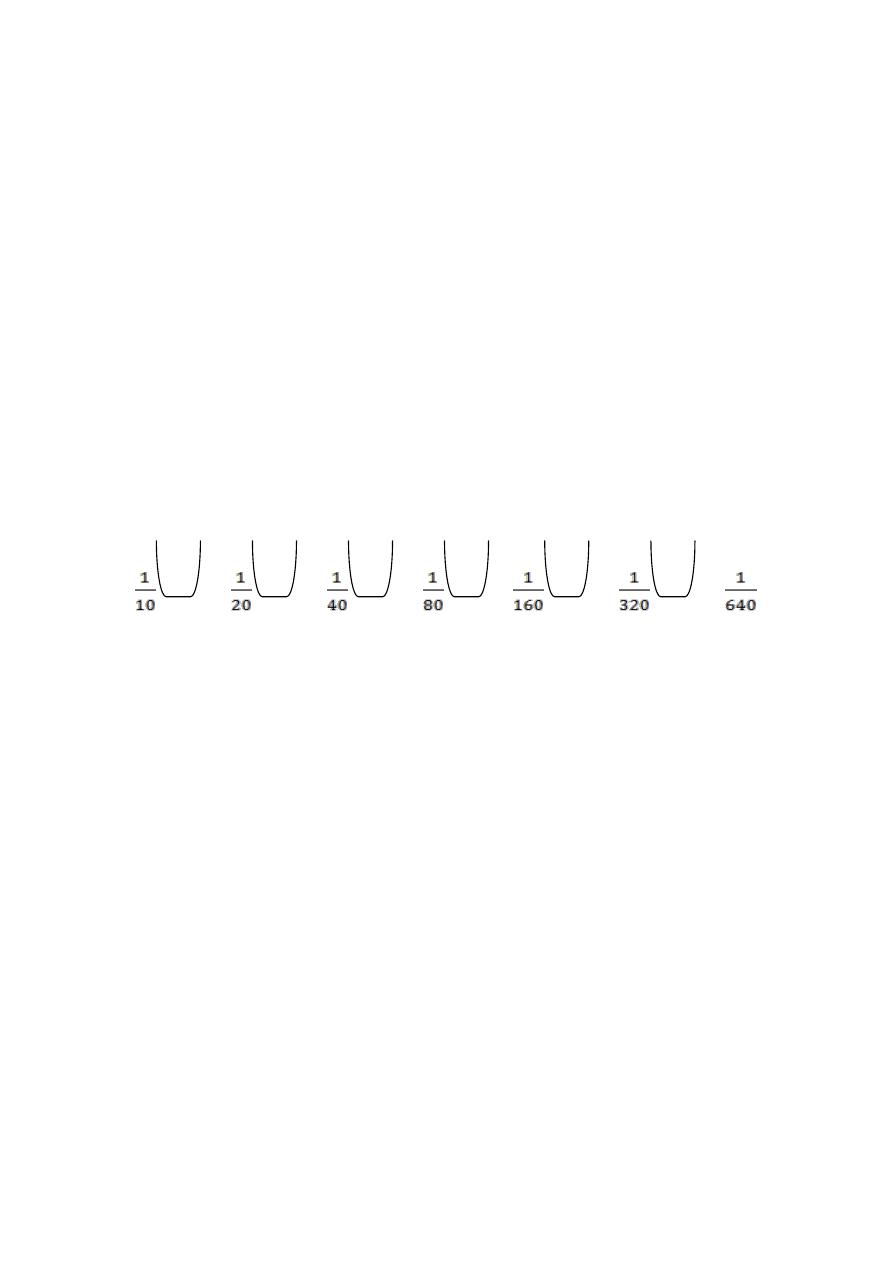
.ا
م
.
د
.
هيفاء الحديثي
Bacteriology
Enterobacteriaceae
Genus Salmonella
- Pathogenic for human and animals
- They are gram negative rods, motile with peritrichous
flagella except Gallinarum-pullorum
- Ferment glucose and mannose
acid only but not
ferment lactose or sucrose.
- Salmonella are resistant to certain chemicals as Sodium
deoxycholate or Sodium tetrathionate.
- Survive freezing in water for long period
- Aerobic and facultative anaerobes. Grow on simple media
but some strains require enrichment media with one or
more amino acids.
- Salmonellae decarboxylate amino acids (lysine, ornithine
and Arginine but not glutamic acid).
- For I M V i C
/ | \ \
-ve +ve -ve +ve
- Urease not produced
- Produce H
2
S
black color on kligler Iron agar or Triple
Sugar Iron agar media.

Antigenic structure
Kauffmann-white classify the genus into> 2300 serotypes. This
depends on somatic and flagellar antigens by agglutination and
give each subspecies a letter and numeric name and related them
to city isolated from.
1. Somatic O-Ag
Side chain of repeating sugar projecting from the cell wall.
They are hydrophilic, heat-stable Ags.

2. Flagellar H-Ag
Represent determinant groups on the flagellar protein, they
are heat-labile and Biphasic (phase I & phase II) detached
flagella
remains antigenic
non-motile salmonella
3. Others as
-
Fimbrial Ag (F-Ag)
–just like flagellar detached by
heating & cause confusing cross reaction
-
Capsular Ag (Vi-Ag)
–acidic polysaccharide layer
covering cell wall, also heat-labile.
-
M-Ag
–lose extracellular polysaccharide
-
R-Ag
–responsible for criteria (rough)
mutation to
S(smooth)
Pathogenesis
- S. typhi
-
S. Paratyphi A
most important pathogenic species
- S. Paratyphi B
- S. Cholerasuis
Infection usually related to:
- Ingestion of food & water contaminated with human &
animal wastes.
- Typhoid fever transmitted only by humans.
- Human sources either
acutely infected persons
carriers

- Animal sources through poultry and eggs.
- In salmonella we need large infective dose due to effect of
gastric acidity (at least 100.000).
Types of salmonella infections
1. Enterocolitis
Invasion of epithelial & subepithelial tissues of S.I & L.I.
organisms penetrate through the mucosal cells into
lamina propria
inflammation
Symptoms includes: nausea, headache, vomiting and
profuse diarrhea and low grade fever but episode resolves
within 2-3 days.
(stool culture usually positive for few weeks)
2.
Bacteremia
(5-10% of salmonella infection mainly caused
by S.choleraesuis. Spreading to blood stream following
oral infection causing focal lesions of many organs (lungs,
bones, meninges … etc).
(Blood culture usually positive)
3. Enteric fever (Typhoid fever)
- Mainly caused by S.typhi
Infection start in S.I.
multiply in peyers patches
liver, gallbladder & spleen
bacteremia.
- Incubation period (10-14) days

- Symptoms include: fever, malaise, headache, constipation
and myalgia.
- Signs include: bradycardia, hepatospleenomegaly and rose
spots on a skin of abdomen & chest
- WBC count may be low
- Carrier state may develop in about 5% of patients due to
invasion of gall bladder causing excretion of the bacteria
in the feces.
Laboratory Diagnosis
Specimens include:
Blood for culture in bacteremia, and often positive from
the 1
st
week in enteric fever
Bone marrow may be useful
Urine cultures may be positive after a second week.
Stool specimens
positive in 2
nd
-3
rd
weeks in typhoid fever and usually
positive in enterocolitis.
Duodenal drainage
positive results in carrier state
Biopsy from rose spots
Serum (agglutinating Ab appear 2
nd
– 3
rd
weeks)

A. Bacteriologic methods:
1. Culture on enrichment media (selenite F or tetrathionate
broth) also on selective media (SS, Salmonella–
Shigella, Bismuth sulfate
black color of H
2
S)
2. Identification of colonies by Biochemical tests and slide
agglutination test with specific antisera.
B. Serological test (Widal test)
Serum agglutinating Ab rise sharply during 2
nd
– 3
rd
weeks
of typhoid fever.
- Serial dilutions of patient serum
- Addition of fixed amount of Ags (O, H, Vi)
Agglutination will occur
with
dilution
Titer: is the reciprocal of the highest dilution of the patient
serum which gives positive reaction.
Another test needed after 7-10 days
Results of
Widal test
- Anti –O: appear 2
nd
–3
rd
week & stay for few weeks (>160)
- Anti-H: remain high (>160) reflecting old infection or
immunization.
- Presence of anti-Vi occurs in carriers

Treatment
- Usually
by
anti-microbial
therapy
(Ampicillin,
Trimethoprim, sulfamethoxazole and 3
rd
generation
cephalosporin)
- Relapse may occur 2-3 weeks after recovery
- Re-infection may occur but milder
